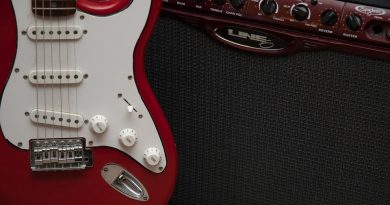Master Slash Chords with This Comprehensive Guitar Chords Guide
Master Slash Chords with This Comprehensive Guitar Chords Guide
Slash chords are a unique and interesting way to approach chord voicings on the guitar. Mastering slash chords can add depth and complexity to your playing, allowing you to create rich and expressive sounds. In this comprehensive guide, we will cover everything you need to know about slash chords and how to incorporate them into your guitar playing.
Understanding Slash Chords
Slash chords are simply chords that have a different note in the bass than the root of the chord. For example, a C major chord with a G bass note would be written as C/G. The slash (/) separates the root chord from the bass note, indicating that the specified bass note should be played instead of the root of the chord.
Slash chords can add a lot of color and tension to your playing, as the bass note creates a different harmonic context for the chord. They are commonly used in various genres of music, including rock, jazz, and pop, to create interesting chord progressions and harmonies.
How to Play Slash Chords
Playing slash chords on the guitar is relatively simple once you understand the concept. To play a slash chord, you will need to find the root chord on the fretboard and then locate the specified bass note. For example, to play a C/G chord, you would play a regular C major chord shape and add the G bass note either on the low E string or the A string.
It’s important to remember that the bass note should be the lowest sounding note in the chord voicing. Experiment with different fingerings and positions on the fretboard to find the most comfortable and musically pleasing way to play slash chords.
Common Slash Chords
There are many different slash chords that you can incorporate into your playing. Some common slash chords include:
1. C/G – C major chord with G bass note
2. G/B – G major chord with B bass note
3. D/F# – D major chord with F# bass note
4. Em/G – E minor chord with G bass note
5. A/C# – A major chord with C# bass note
These are just a few examples of slash chords, but the possibilities are endless. Experiment with different combinations of root chords and bass notes to create unique and interesting sounds in your playing.
Mastering Slash Chords
To master slash chords on the guitar, it’s important to practice playing them in different keys and positions on the fretboard. Start by familiarizing yourself with the most common slash chords and their fingerings, and then work on incorporating them into your chord progressions and improvisations.
Here are some tips for mastering slash chords:
1. Practice transitioning between different slash chords smoothly and seamlessly.
2. Experiment with arpeggiating slash chords to create interesting melodic patterns.
3. Use slash chords in combination with other chord voicings to create rich and complex harmonic textures.
4. Incorporate slash chords into your favorite songs and guitar solos to add depth and expression to your playing.
By mastering slash chords on the guitar, you can expand your musical vocabulary and create a unique and expressive sound that sets you apart as a guitarist.
Conclusion
Slash chords are a versatile and creative way to approach chord voicings on the guitar. By mastering slash chords, you can add depth and complexity to your playing and create rich and expressive sounds. Experiment with different slash chords and incorporate them into your playing to unlock new creative possibilities on the guitar. Practice transitioning between different slash chords smoothly and seamlessly to build your skills and develop your musical ear. With dedication and practice, you can master slash chords and take your guitar playing to the next level.






